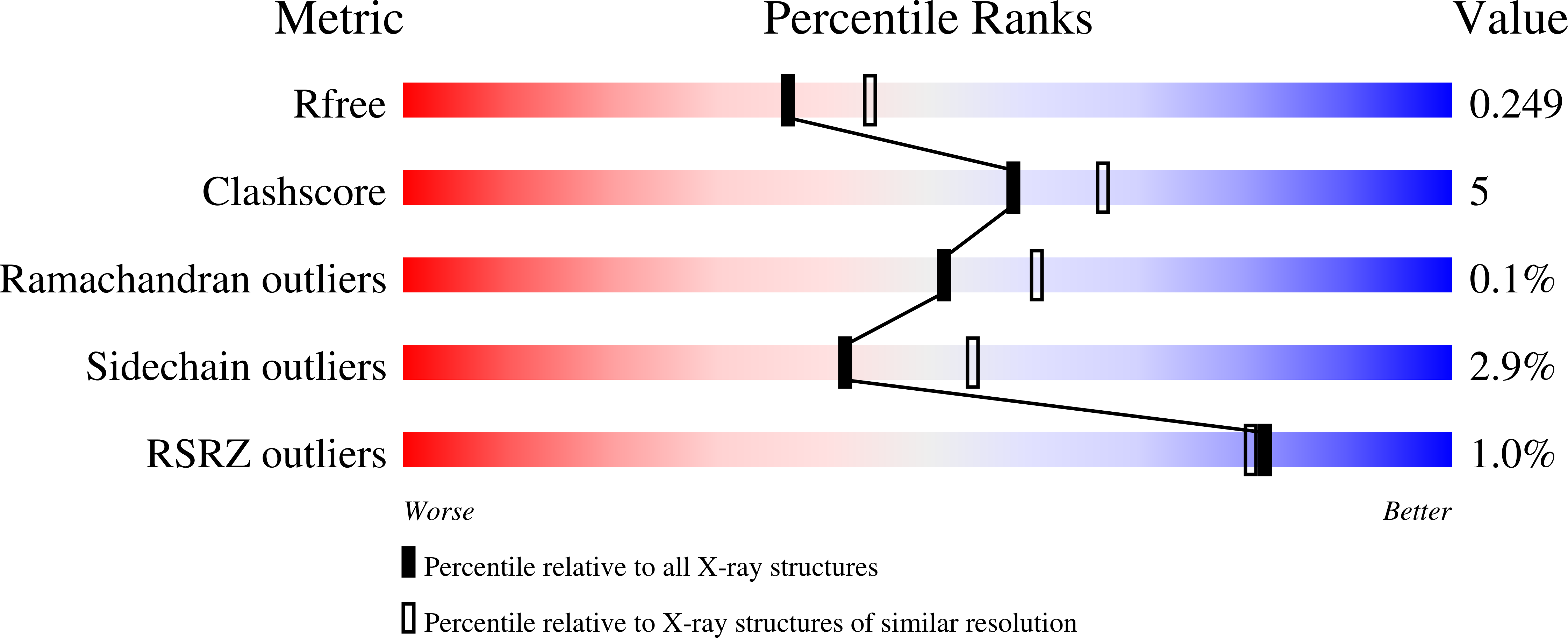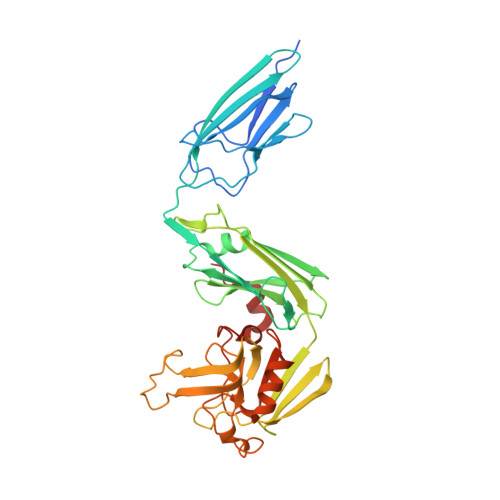Non-classical transpeptidases yield insight into new antibacterials.
Kumar, P., Kaushik, A., Lloyd, E.P., Li, S.G., Mattoo, R., Ammerman, N.C., Bell, D.T., Perryman, A.L., Zandi, T.A., Ekins, S., Ginell, S.L., Townsend, C.A., Freundlich, J.S., Lamichhane, G.(2017) Nat Chem Biol 13: 54-61
- PubMed: 27820797
- DOI: https://doi.org/10.1038/nchembio.2237
- Primary Citation of Related Structures:
5DU7, 5DUJ, 5DVP, 5DZJ, 5DZP, 5E1G, 5E1I, 5E51, 5E5L, 5K69 - PubMed Abstract:
Bacterial survival requires an intact peptidoglycan layer, a three-dimensional exoskeleton that encapsulates the cytoplasmic membrane. Historically, the final steps of peptidoglycan synthesis are known to be carried out by D,D-transpeptidases, enzymes that are inhibited by the β-lactams, which constitute >50% of all antibacterials in clinical use. Here, we show that the carbapenem subclass of β-lactams are distinctly effective not only because they inhibit D,D-transpeptidases and are poor substrates for β-lactamases, but primarily because they also inhibit non-classical transpeptidases, namely the L,D-transpeptidases, which generate the majority of linkages in the peptidoglycan of mycobacteria. We have characterized the molecular mechanisms responsible for inhibition of L,D-transpeptidases of Mycobacterium tuberculosis and a range of bacteria including ESKAPE pathogens, and used this information to design, synthesize and test simplified carbapenems with potent antibacterial activity.
Organizational Affiliation:
Department of Medicine, Johns Hopkins University, Baltimore, Maryland, USA.















